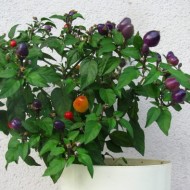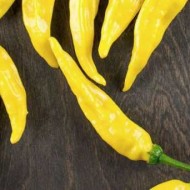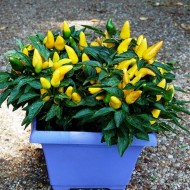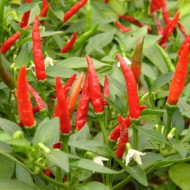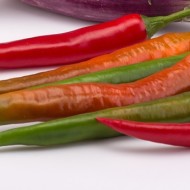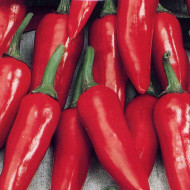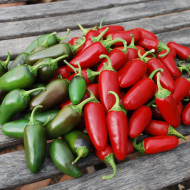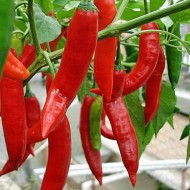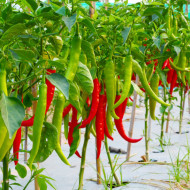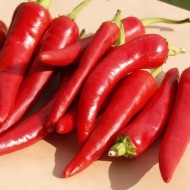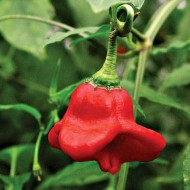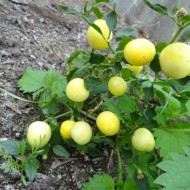28 hot varieties of hot peppers with names and photos
Content
- 1 A little about the history of pepper
- 2 Characteristics and description of the culture
- 3 Video "Top 10 hot peppers in the world"
- 4 The best varieties of indoor peppers
- 5 The best varieties of hot peppers, early ripening
- 6 Review of medium-ripening hot pepper varieties
- 7 Late ripening hot peppers
- 8 The most productive varieties of hot peppers
A little about the history of pepper
The homeland of hot red pepper is tropical America. It was there that the locals began to cultivate spicy fruits. They were brought to Europe by Spanish navigators who called the spice "Indian". Today, pepper is grown in many countries, but Thailand and India are considered the main suppliers.
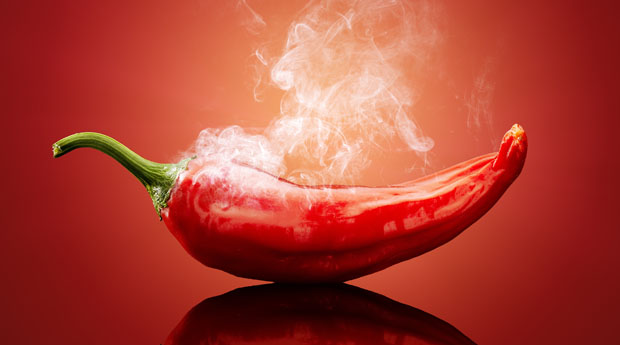
At the beginning of the 20th century, chemist Wilbur Scoville invented a method for measuring the pungency of pepper, namely, its extract. And today the level of pungency of various plant cultures is determined by the Scoville scale.
Characteristics and description of the culture
Hot peppers are especially popular among the traditional dishes of southern countries. We use it quite often, but in smaller doses. The spice is characterized by a bitter taste. The shrub, on which the fruits of the pepper ripen, looks quite impressive:
- a branched culture reaching half a meter in height;
- during the flowering period, the shrub is strewn with white flowers;
- unripe fruits are spherical.

Table: varieties of the hottest peppers
All over the world they use the classification of pepper pungency, which suggests the following categories:
- Mexican habanero - the most common peppers;
- Chinese are the sharpest;
- trinidad - are in demand in the preparation of sauces;
- jalapeños are the most thermophilic varieties;
- 7 POT - have an original shape and taste;
- cayenne - sharp, elongated;
- bush - the most popular representative of this group is Tabasco.
Semi-shrubs are popular not only for their fruits, but also for their aesthetic appearance. This is the reason for the demand for culture as an original element of the decor of apartments and verandas.
Video "Top 10 hot peppers in the world"
This video features the hottest hot peppers.
The best varieties of indoor peppers
The culture includes a huge number of species, many of which can be grown right on the windowsill. It is important to understand that pepper is a tropical plant that is not adapted to the typical Russian climate. Therefore, deciding to have this unusual "flower" in the apartment, you should take care of creating the necessary conditions. The most important is the organization of additional lighting, especially in the cold season.
Indian summer
This variety is considered to be relatively unpretentious. Feels comfortable in the shade, undemanding to watering. It can grow in an apartment as a perennial plant, as well as in a garden bed as an annual.The shrub reaches a height of 50 cm, the fruits are spherical and have a bittersweet taste.

The Indian Summer variety is considered relatively unpretentious.
Hungarian yellow
The culture perfectly tolerates temperature fluctuations, frost. Fruits resemble a cone in shape, during ripening they are characterized by a yellow color, in a ripe form - red. The height of the semi-shrub is 20–30 cm. The peppercorns are sweetish in taste, of medium pungency.
Goldfinger
The variety is very light-requiring and gives a bountiful harvest with proper lighting. Fruits 10 cm in size, yellow. Culture is often grown exclusively for aesthetic purposes.
Filius Blue
Perennial. Unripe pods are purple, ripe pods are red. A shrub that grows up to 25 cm needs abundant soil moisture, spraying and sufficient light.
- Filius Blue
- Hungarian yellow
- Goldfinger
The best varieties of hot peppers, early ripening
The culture is classified not only by the degree of pungency of the fruit, but also by the timing of their ripening. The earliest shrubs give their first harvest 3 months after the first shoots appear. They are considered relatively resistant to frost and pests, but still need proper care.
Adjika
The shrub belongs to the category of tall, reaches about a meter in height. Strongly branched, rather strong. The peppercorns have a cone-like shape, a bright red hue and a characteristic aroma.
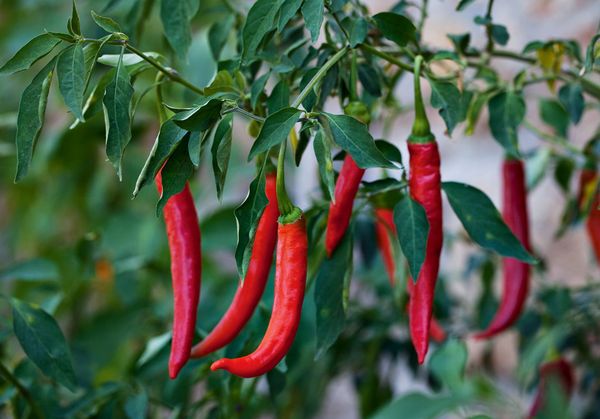
The Adjika variety has a bright red hue and a characteristic aroma.
Double abundance
Relatively undemanding to the conditions of detention, however, it bears fruit much better in the greenhouse than in the open field. The pods resemble a trunk, reach 20 cm in length, have thick walls. Up to 50 peppers ripen on one shrub.
Burning bouquet
The culture is adapted for growing in a greenhouse and in a garden bed. The bush grows up to half a meter in height and is characterized by a strong trunk. The pods are pungent and have a light aroma.
Impala
The plant is insensitive to temperature extremes and immune to fungal diseases. The shrub grows up to 80 cm.The fruits are massive, in ripe form they weigh up to 100 g.
- Double abundance
- Burning bouquet
- Impala
Indian elephant
Shrubs grow up to 140 cm. Keeping crops in greenhouse conditions can provide a good harvest. The peppercorns are weak and have a bright aroma.
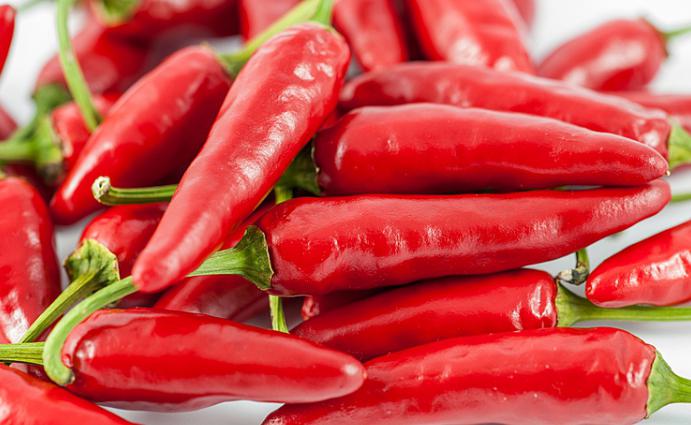
Indian elephant variety grown in greenhouses
Chinese fire
One of the most bitter types of pepper. The shrub is adapted to the conditions of open ground, it grows up to 60 cm in height. The fruits are small, but long - up to 30 cm.

Chinese fire is one of the bitter types of pepper
Wit
The shrub is medium-sized, has large leaves. Grows in greenhouses and open field conditions. Fruits are red with a dark cone-shaped shade. The culture is resistant to pests, temperature changes.
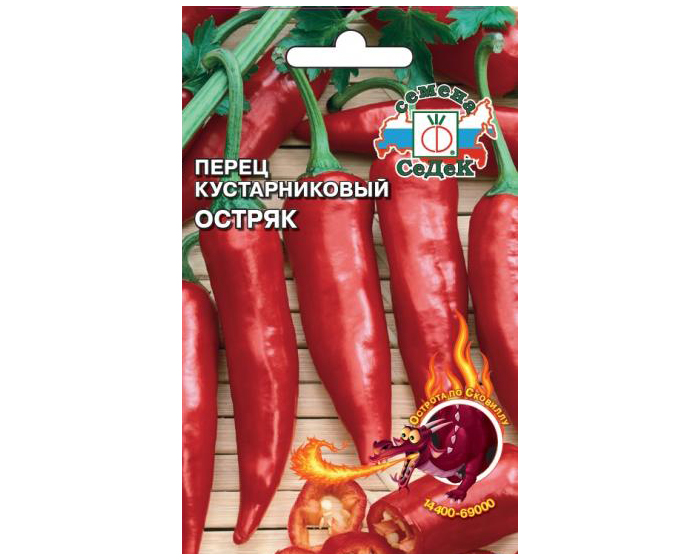
The Wit variety has a pungent piquant taste.
Tula
The shrub is grown in open ground under cling film. The fruits are cone-shaped. The variety has a high yield level.
Habanero
The variety has several varieties, the fruits of which differ in color. Habanero peppers are characterized by their shape and texture, reminiscent of a mashed tomato. Fruits are small in size and have a fruity taste with characteristic pungent notes.
Jalapeno
The Mexican jalapeno variety is characterized by tall shrubs, strong shoots and high yields. The size of the fruit reaches 10 cm. The color of the peppercorns is bright green, but as it ripens, it transforms into a deep red. As a rule, 30-40 fruits ripen on one shrub.
- Tula
- Habanero
- Jalapeno
Miracle of the Moscow region
The shrub is one of the tall ones - its height reaches about 1.3 m. The branches are strong, have few leaves. One square meter accounts for about 5 kg of the crop. The peppercorns are cone-shaped, thin and long. The miracle of the Moscow region is famous for its unusual taste and low pungency.
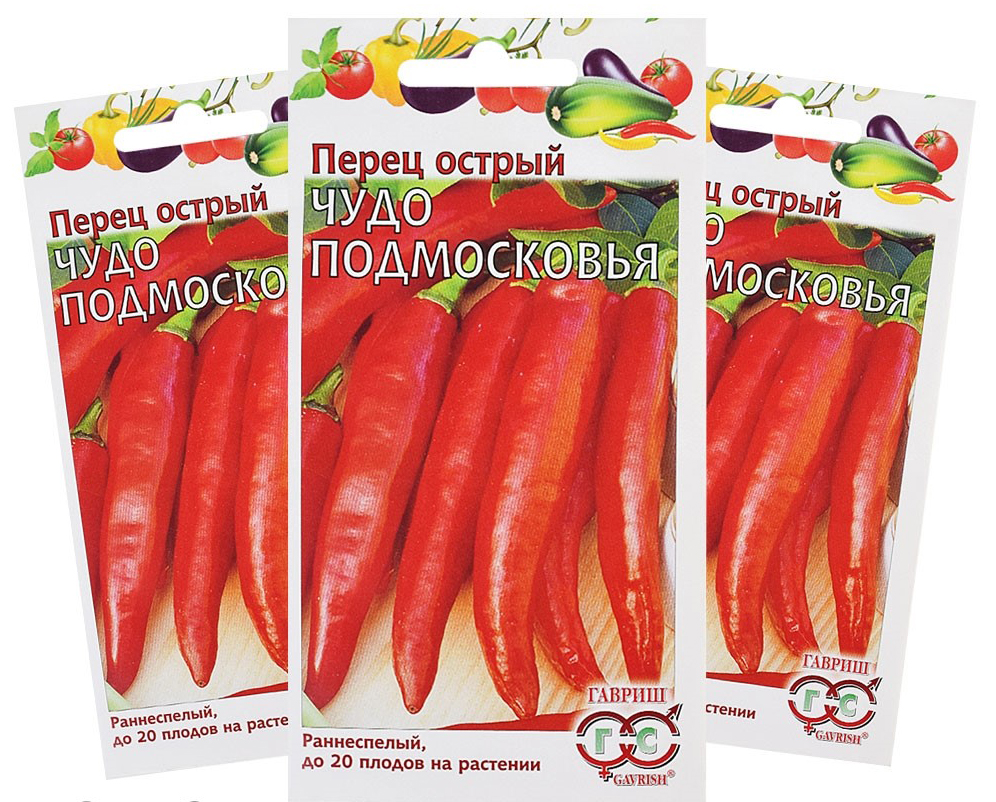
The miracle of the Moscow region is famous for its unusual taste and low pungency
Review of medium-ripening hot pepper varieties
Varieties with an average ripening period, as a rule, have high yields and resistance to all kinds of unfavorable conditions.
Cascabel pepper
The fruit of this variety is called a rattle pepper, since the sound of seeds is heard with light shaking. The shrub is medium-sized - it grows up to half a meter. The peppercorns are small, dark in color, and have a high level of pungency. The growing season is about 120 days.
Astrakhan 147
The variety is intended for cultivation in open ground, but gardeners in the northern latitudes should use agrofibre for warming crops. The shrub is low. The fruits do not ripen at the same time, due to which the gardener will have a regular harvest for a long period.
Having created the necessary conditions, the gardener will collect about 4 kg of sharp fruits from a square meter.
Ram horn
The name of the variety is associated with the appearance of the fruit - they are elongated and slightly curved towards the bottom. The variety is relatively unpretentious, but needs timely watering. Ample hydration gives the fruit a medium pungency. In case of moisture deficiency, the peppercorns become more pungent.
Cayenne red
The variety is considered relatively new among all varieties. The peppercorns are thin, have medium pungency. The culture is grown mainly on window sills and in greenhouses.
Dragon tongue
The plant reaches a meter in height. Ripe pods are bright red in color, have a high degree of pungency and a characteristic spicy aroma.
- Cascabel pepper
- Astrakhan 147
- Ram horn
- Cayenne red
- Dragon tongue
Late ripening hot peppers
Late ripening varieties are characterized by the longest growing season - 150 days.
Jati jolokia
The shrub is low, grows up to 40 cm in height. The growing season lasts on average 120–135 days. The pods are red when ripe and greenish when half-ripe. They have a high level of pungency.

Jati Jolokia has a high degree of pungency
Riot
The ripening period is 150 days. The peppercorns are white, and after ripening they are red. The harvest is usually plentiful. About 250 fruits ripen on one bush.
Tabasco
Resistant shrub, low height. The pods are small, have an average pungency. The yield is high.
Vizier
The fruits are turbid in shape, weigh about 30 g when ripe. The peppercorns are characterized by medium pungency.
- Riot
- Tabasco
- Vizier
The most productive varieties of hot peppers
Wanting to get the richest harvest of pepper, gardeners plant the most fertile varieties.
Twinkle
Mid-season shrub, reaches a height of half a meter. From one square meter, the farmer will harvest about 4 kg of the crop.

Ogonyok is one of the highest-yielding varieties
The Queen of Spades
The bush has an average growing season. The pods are of different colors, cone-shaped and sweetish in taste.
Ryabinushka
The pods are spherical. Paprika is prepared from the fruit.
Elephant trunk 304
The culture is grown mainly in the southern regions. Fruits are medium in size, weighing only 15 g.
- The Queen of Spades
- Ryabinushka
- Elephant trunk 304
The hottest pepper in the world
Bhut Jolokia is listed in the Guinness Book of Records as the most bitter pepper in the world. There are also more pungent varieties, but the advantage of this is that it is naturally pungent, while other varieties are obtained by selection.
Bhut Jolokia grows in India, where it is very popular. Pepper is actively used to scare away elephants. Hedges are coated with hot spice, as a result of which the elephants lose interest in them. In addition, the pods are used in the Indian army - pomegranates are stuffed with pepper extract.
The degree of hotness of a pepper depends on the region of its cultivation. In states where dry weather prevails, the fruits are less pungent. In the northeastern region of India, Bhut Jolokia is much hotter.
Any gardener can take up the cultivation of this or that variety of bitter pepper. The main thing is to create the necessary level of moisture and provide the plant with enough light. Compliance with these conditions almost 100% guarantees a rich harvest of spicy fruits.

